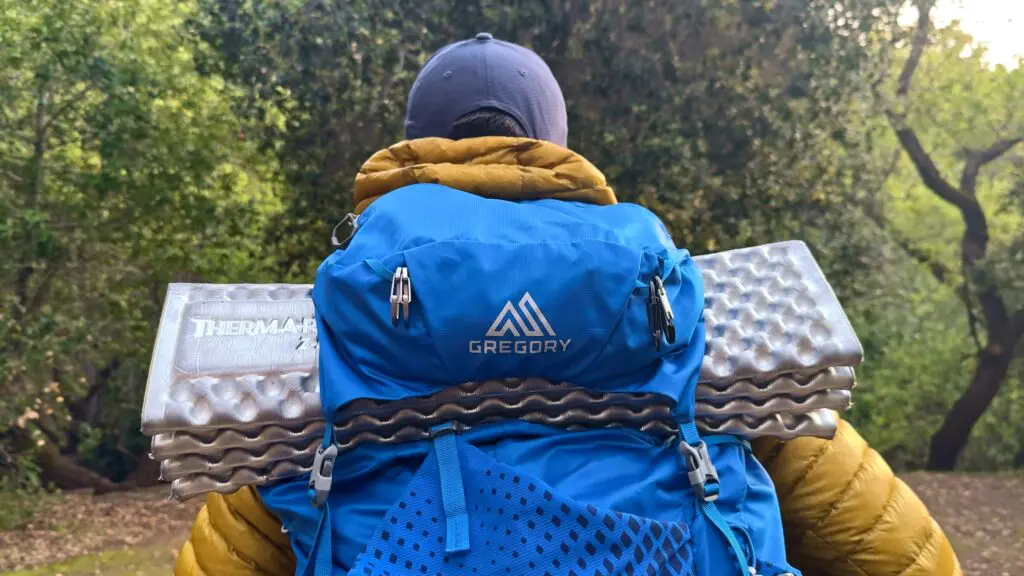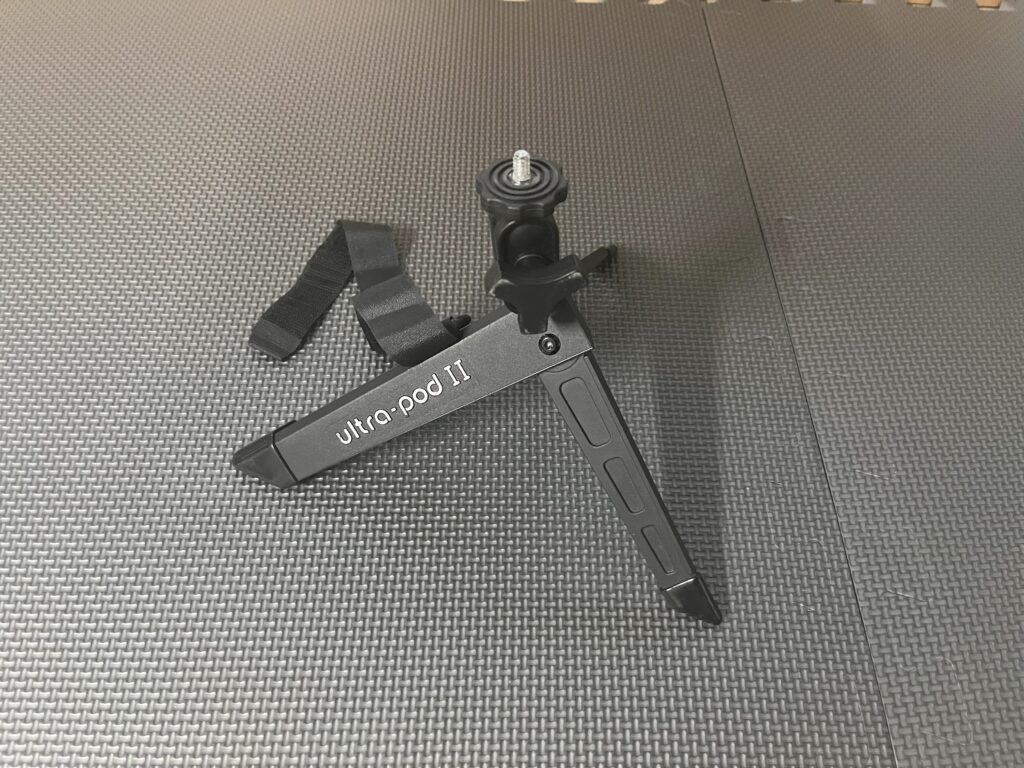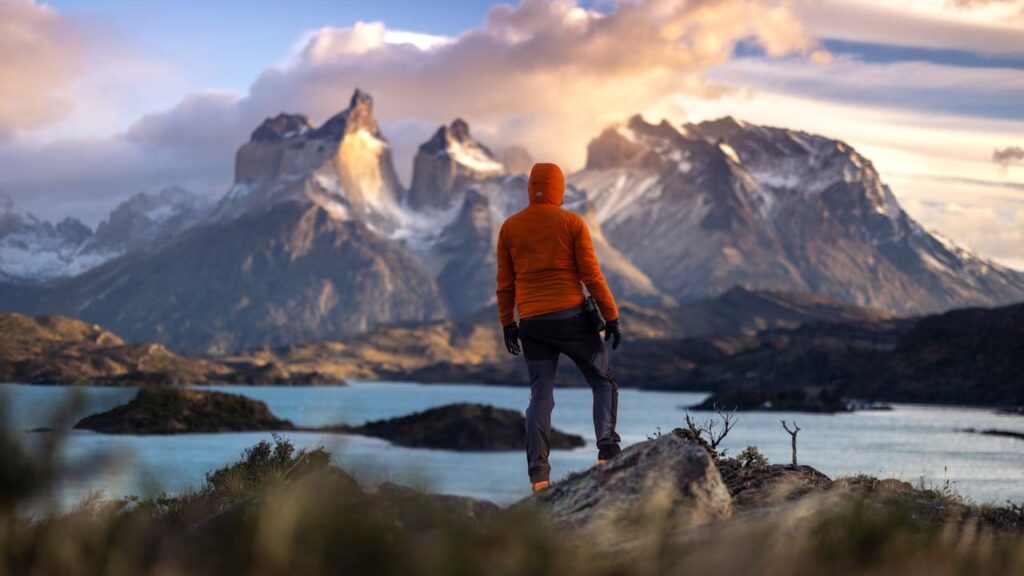Backpacking Gear List: 5 Items I Totally Regret Buying

I’ve spent thousands of dollars on backpacking gear over the years. Some of it? Absolutely worth every penny. But some of it? A complete waste of money.
I’m talking about gear that sounded great on paper but completely flopped in the real world. Stuff that was too heavy, too fragile, or just didn’t perform the way I expected.
Now, before you grab your pitchforks, hear me out. These aren’t necessarily bad products—they just didn’t work for me. Maybe they’ll work for you, depending on your backpacking style. But if I could go back in time? I’d save my cash and buy something better.
Want to avoid the same mistakes? Grab my Free Backpacking Gear Checklist—it’ll help you pack smarter and avoid wasting money on gear you don’t need. Download it here.
Prefer to watch instead? Check out my full YouTube breakdown here:
Disclosure: This post contains affiliate links. As an Amazon Associate, I earn from qualifying purchases. I only recommend products I use and trust.
1. Large Backpacks (65L+): Too Big, Too Heavy
Why Bigger Isn’t Always Better

When I first started backpacking, I thought bigger = better. I figured a 70 Liter backpack would let me carry everything I could possibly need. More space means more gear, right?
Wrong.
Here’s why a big backpack can actually make your trip worse:
- A bigger backpack = a heavier load. More space tempts you to overpack, turning your lightweight adventure into a grueling, painful trek.
- Most large packs weigh over 5 pounds empty. That’s before you add your gear. If your goal is to move efficiently, starting with a heavy pack is a huge disadvantage.
- Unless you’re doing winter expeditions or multi-week treks, you don’t need that much space. A 70L+ pack is overkill for most backpackers, especially beginners.
I learned this lesson the hard way. My first trip with a huge, overloaded pack felt like a death march. Every uphill climb was brutal, every mile felt like three, and by the end of the trip, my back and shoulders were wrecked.
What Actually Worked Better for Me
After that experience, I downsized to a 48L pack, which forced me to pack smarter. The result? A much lighter, more comfortable hike—without sacrificing the gear I actually needed.

Better Option: For most 2-5 day backpacking trips, a 45-55L pack is the perfect balance of capacity and weight. Check out these great options:
- Osprey Exos 48 – Ultralight, ventilated, and incredibly comfortable (on Amazon).
- Gregory Focal 48 – Lightweight with excellent back support (on Amazon).
- Hyperlite Mountain Gear 2400 Southwest (40L) – Super durable and water-resistant for ultralight hikers.
- Granite Gear Crown 3 60 (Compressed to 50L) – Can be adjusted down to 50L, making it versatile for different trip lengths (on Amazon).
If you’re looking for a complete breakdown of essential gear for the trail, check out my full Backpacking Gear Guide.
2. Solar Chargers: Sounded Great, Never Worked

“Free power from the sun!” Sounds like a backpacker’s dream, right? No more worrying about outlets, no need to ration battery life—it’s like backpacking wizardry.
At least, that’s what I thought. But after testing one on multiple trips, I can confidently say: solar chargers kinda suck for backpacking.
The Problem with Solar Chargers
Here’s the problem:
- They only work in full sun. If you’re hiking in shaded forests, dealing with cloudy weather, or setting up camp under tree cover, good luck getting a charge.
- Solar chargers charge painfully slow. Even in perfect sunlight, mine only charged 10% in hours. Cloudy skies? Forget about it.
- They add extra weight. Mine weighed nearly a full pound, and after multiple trips, it turned out to be nothing more than dead weight in my pack.
For some people—like those doing long-term off-grid expeditions in consistently sunny environments—solar might be worth it. But for most backpackers? A good battery bank is just a smarter, more reliable choice.
A Smarter Alternative: Battery Banks
After one too many frustrating experiences, I completely ditched solar chargers and switched to a battery bank. No more playing “solar panel Tetris” on my backpack—just consistent, reliable power whenever I need it.
Here’s what I use instead:
- For overnight trips: A 5,000 mAh battery bank is enough for a full phone charge.
- For 2-3 night trips: I bring a 10,000 mAh battery bank—it gives me 2-3 full charges for my phone and GPS.
- For longer trips (3+ nights): A 20,000 mAh battery bank keeps my phone, GPS, and headlamp powered for a week. It’s heavier, but way more reliable than solar.
The Verdict?
If you want stress-free, guaranteed power, skip the solar charger and pack a quality battery bank instead. Trust me—you’ll thank yourself when your phone still has juice on day three.
3. UltraPod Tripod: Broke Twice, Never Again
When I first started filming my backpacking trips, I wanted a lightweight, compact tripod that wouldn’t take up much space in my pack. After some research, I landed on the UltraPod tripod—a popular choice among ultralight hikers. It seemed like the perfect balance of portability and stability.
At first, it worked fine. It was small, easy to set up, and held my camera securely—until it didn’t.
Why the UltraPod Tripod Didn’t Work for Me

The first one broke mid-trip when the screw that secures the camera stripped out completely. No way to tighten it, no way to keep my camera steady—just dead weight in my pack for the rest of the trip.
I figured I got a defective unit, so I bought a second one. Same exact failure.
Now, I know some backpackers love the UltraPod and have used it for years without issues. But after two failures in a row, I couldn’t risk a third. When I’m miles from civilization, I need gear I can trust.
A More Reliable Alternative: Joby GorillaPod
After ditching the UltraPod, I switched to the Joby GorillaPod—and unlike the UltraPod, it hasn’t failed me once.
Here’s why I recommend it:
- Flexible Legs = More Versatility – The bendable legs let you wrap it around rocks, tree branches, or uneven surfaces, making it far more adaptable in the backcountry.
- More Affordable – Compared to many other lightweight tripods, the GorillaPod costs less while still getting the job done.
- It Just Works – After multiple trips, the GorillaPod is still going strong, while the UltraPod failed me twice.
- Compact design; patented; compact and foldable design
- Universal fit; fits most smartphones with or without a case
- Stainless steel spring loaded design for quick grip and release of smartphone
- Flexible base; flexible gorilla pod legs with rotating ball head provide endless platforms and creative angles
If you need a compact, budget-friendly tripod that won’t let you down, I’d skip the UltraPod and go with the Joby GorillaPod instead. It’s not the absolute lightest, but it’s proven to be far more reliable.
Want more ultralight gear? Check out my Ultralight Backpacking Gear List for my top picks.
4. Expensive Backpacking Pillows: Not Worth It
A good night’s sleep can make or break a backpacking trip, so I didn’t mind spending extra on a high-quality backpacking pillow. I figured a premium model would last for years. Unfortunately, that wasn’t my experience.
What Went Wrong with Premium Pillows
I tested three different pillows, each from well-known brands, hoping for better durability. Here’s how they held up:
- Trekology Aluft 1.0 – A budget-friendly option, lightweight and compact. It worked fine for two trips, but by the third night out, I woke up on the ground. Slow air leaks overnight made it unusable.
- Sea to Summit Aeros Ultralight – Wanting something more reliable, I upgraded to this well-reviewed pillow. It was comfortable and easy to inflate, but by trip four, it had developed a leak.
- Sea to Summit Aeros Premium – Determined to find a long-lasting pillow, I went for this premium model. It lasted five trips before I noticed it losing air overnight.
Each of these pillows worked great at first, but after just a few trips, they all started deflating. Maybe I was unlucky, or maybe inflatable pillows just aren’t built for long-term durability. Either way, spending over $100 on pillows that didn’t last a season felt frustrating.
A Better Option: A Pillow That Actually Lasts

After my string of bad luck, I decided to try the FlexAir inflatable pillow—a $3 disposable pillow meant for medical use. It’s not as cushy as premium models, but here’s what I love about it:
- Extremely lightweight (less than an ounce)
- Lasted over 20 trips without a leak
- Costs less than a coffee
If you want to try it, you can find it here. It’s not perfect—you need a straw to inflate it, and it can literally blow away in the wind—but for the price, I’ll take my chances.
Want a more durable inflatable pillow? Some backpackers swear by the NEMO Fillo Elite. I haven’t tested it yet, but if I try another premium pillow, that’s the one I’ll go for.
- Packs remarkably small in an integrated stuff sack that won’t get lost.
- 3-inch I-beam baffled air cell adds weightless structure that cradles the head and eliminates any “balloon” feeling.
- Wider dimensions add more comfort on the trail, at a negligible weight increase.
- 100% post-consumer recycled Zerofiber insulation creates a plush, cushiony feel.
5. Closed-Cell Foam Sleeping Pads: Worst Sleep of My Life
I get why people love closed-cell foam sleeping pads—they’re ultralight, practically indestructible, and won’t leave you stranded with a leak. If you’re the type of backpacker who prioritizes durability over comfort, they might be the perfect choice.

But if you’re a side sleeper like me? They feel like sleeping on a rock.
Why Foam Pads Don’t Work for Everyone
No matter how soft the ground looks, by morning, my hips and shoulders feel bruised. I’ve tried different sleeping positions, adding extra layers underneath, and even using my backpack as extra padding. Nothing worked.
Some ultralight hikers say, “You just need to get used to it.” But I don’t have that kind of patience—especially after a long day of hiking when quality sleep is crucial for recovery.
What’s a Better Option?
After struggling with foam pads for too long, I finally switched to the Therm-a-Rest NeoAir X-Lite—and I’ll never go back.
Here’s why it’s worth every penny:
- 10x more comfortable – The 3-inch thickness means my hips and shoulders don’t dig into the ground.
- Lighter than you’d expect – At just 12.5 oz, it’s barely heavier than some foam pads.
- Packs down tiny – It compresses to the size of a water bottle, saving valuable space.
- Insulates well – With an R-value of 4.5, it’s warm enough for three-season trips.
- The standard for ultralight backpacking. The XLite NXT mattress delivers unrivaled comfort and warmth for minimal weight
- Foam-free NeoAir design weighs just 13 oz (370 g) in size Regular and rolls up as small as a conventional 1-liter bottle
- 3-inch (7.6 cm) thick profile and baffled internal structure provide unrivaled stability and support
- Equipped with a dependable and rugged WingLock valve providing easy inflation and lightning-fast deflation
Yes, it’s pricier than a foam pad, but after dozens of nights on the trail, I can confidently say: this is the best sleeping pad I’ve ever used. If you want actual rest while backpacking—especially as a side sleeper—do yourself a favor and invest in a quality inflatable pad.
👉 Check out the Therm-a-Rest NeoAir X-Lite here.
What to Buy Instead: Smarter Backpacking Gear Choices
Instead of wasting money like I did, here’s what I actually recommend for a lighter, more comfortable, and more efficient backpacking setup.
Choosing the Right Backpack for Your Needs
A huge 65L+ backpack will tempt you to overpack. Instead, most hikers will be way better off with a 45-50L pack.
- Best ultralight backpack: Hyperlite Mountain Gear 2400 Southwest – If you want a lightweight pack that’s waterproof and built for serious backcountry trips.
- Best budget backpack: REI Co-op Flash 55 – A solid, well-designed pack that won’t break the bank.
- Best overall backpack: Osprey Exos 48 – A perfect balance of weight, comfort, and storage for most backpackers (on Amazon).
Better Power Solutions for Backpacking
Solar chargers seem like a smart idea, but they’re unreliable on the trail. A battery bank is a better choice—lighter, more efficient, and more dependable.
- Best overall battery bank: Anker PowerCore 10,000 mAh – Lightweight and provides 2-3 full phone charges (on Amazon).
- Best high-capacity option: Anker PowerCore 20,000 mAh – Heavier, but perfect for long trips where you need more power (on Amazon).
- Best ultralight power option: Nitecore NB10000 – One of the lightest battery banks on the market (on Amazon).
Reliable Camera Gear for the Trail
If you’re serious about capturing your adventures, a durable, stable tripod is worth the investment. Skip the cheap, flimsy options that break easily.
- Best all-around tripod: Joby GorillaPod – Flexible, stable, and tough enough for the backcountry (on Amazon).
- Best ultralight tripod: Sirui AM-223 Travel Tripod – Weighs under 2 lbs but still supports a camera or phone (on Amazon).
Comfortable Sleep Systems That Actually Work
A good night’s sleep can make or break your backpacking trip. Closed-cell foam pads might work for some, but if you’re a side sleeper or want real comfort, an inflatable pad is the way to go.
- Best ultralight sleeping pad: Therm-a-Rest NeoAir XLite – Super light and comfortable for side sleepers (on Amazon).
- Best budget sleeping pad: TREKOLOGY UL80 – A budget lightweight pad that provides decent comfort (on Amazon).
- Best insulated sleeping pad for cold weather: Sea to Summit Ether Light XT – Warmer and extra thick for more cushion (on Amazon).
Final Thoughts: Learn From My Mistakes

At the end of the day, backpacking gear is all about what works for you. Just because these items didn’t work for me doesn’t mean they won’t work for someone else. But if I could go back in time? I’d save my cash and invest in gear that actually improved my trips.
If you’re just starting out, it’s easy to fall into the trap of thinking expensive gear = better gear. But that’s not always the case. Some budget-friendly options outperform high-end gear, and some “must-have” items turn out to be more hassle than they’re worth. The key is to focus on reliability, durability, and what actually fits your needs.
Before you spend money on gear, ask yourself:
✔ Do I really need this, or is it just a nice-to-have?
✔ Does this fit my backpacking style and trip length?
✔ Have I read reviews from real backpackers, not just marketing hype?
If you’re looking for high-quality gear that won’t break the bank, check out my Personal Backpacking Gear List—it’s packed with affordable, trail-tested gear that I use on all my current trips.
By learning from other backpackers’ mistakes (like mine), you’ll save money, avoid frustration, and have a way better time on the trail. Happy hiking! 🚶♂️
Join Our Community of Adventure Seekers!
Get the latest backpacking tips, gear guides, and trail inspiration sent directly to your inbox.
Sign up to start exploring!
Amazon and the Amazon logo are trademarks of Amazon.com, Inc. or its affiliates.







